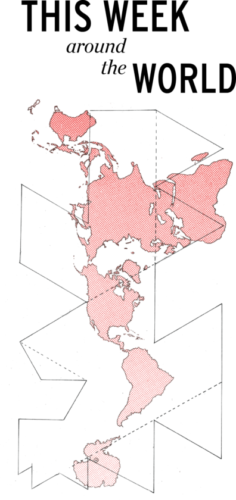Despite talks of de-escalation between military leaders, tensions remain high at the China-India border following a clash on June 15 that left at least 20 dead.
Although the border dispute in the Himalayas can be traced back more than a century to 1914, this conflict was the first in the area to result in this level of bloodshed since 1967.
The conflict occurred in the Galwan Valley, along the remote 2,100-mile stretch of the de facto “Line of Actual Control” established after over a thousand lives were lost in a border war in 1962.
The deadly clash was the culmination of months of mounting tensions between the two nuclear-armed countries.
Although the exact number of troops is unknown, Ajai Shukla, a former Indian Army colonel, estimated that by May China had sent three brigades and thousands of troops from the People’s Liberation Army to the border in the Himalayas. Shukla also estimated India deployed around 3,000 reinforcements during the same time period.
The specific event that triggered this deadly incident is disputed as statements from China and India differ in their accounts of the events.
According to a statement by a Chinese military spokesperson, Colonel Zhang Shuili, on June 15, “the Indian military violated its promise and crossed the Line of Actual Control again illegally. They deliberately launched a provocative assault.”
However, according to India’s Ministry of External Affairs, on June 15, “a violent face-off happened when the Chinese side unilaterally attempted to change the status quo there. They took premeditated and planned action that was directly responsible for the resulting violence and casualties suffered by both sides.”
What officials from both sides agreed on, however, was the means by which the brawl was fought—without a single shot being fired. According to The New York Times, “[officials] say the soldiers followed their de facto border code not to use firearms and went at each other with fists, rocks, and wooden clubs.”
On June 17, Indian Prime Minister Narendra Modi broke his public silence regarding the incident with a short televised speech. “The sovereignty and integrity of India is supreme, and nobody can stop us in defending that,” Modi said. “India wants peace, but if provoked India is capable of giving a befitting reply.”
Wang Yi, China’s foreign minister, told India’s Minister of External Affairs “the Indian side must not misjudge the current situation and must not underestimate China’s firm will to safeguard territorial sovereignty,” according to a statement released in Beijing.
The tension at the border has also exponentially increased the anti-China sentiment in India. According to Al Jazeera, the conflict led to protests of people calling for a boycott of Chinese products.
On June 29, India banned 59 mostly Chinese phone apps, including TikTok and WeChat. The government also blocked Chinese companies from participating in highway projects and investing in micro-, small- and medium-sized enterprises.
Both countries continue to negotiate, attempting to find a way to de-escalate the conflict at the border. However, large numbers of troops remain on both sides, according to India’s Ministry of External Affairs.
Indian media reports say “more meetings are expected both at the military and at the diplomatic level, in future, to arrive at a mutually agreeable solution and to ensure peace and tranquillity along the LAC as per bilateral agreements and protocols,” according to The EurAsian Times.
Despite the meetings, the Indian government is preparing for the tension to continue, believing the conflict could last until October or the onset of the harsh winter in the valley.






